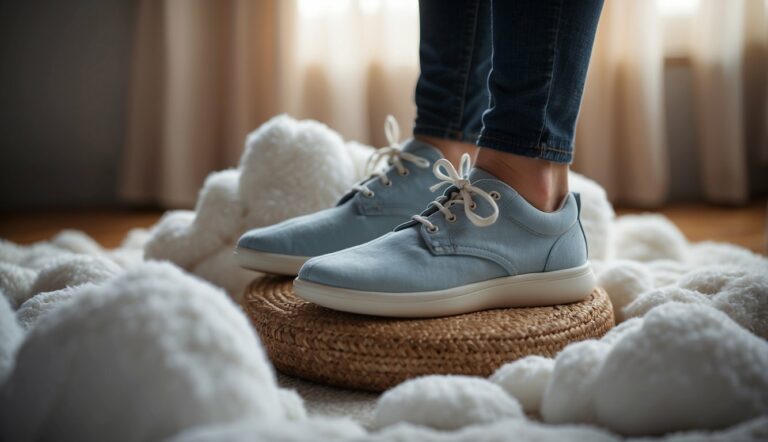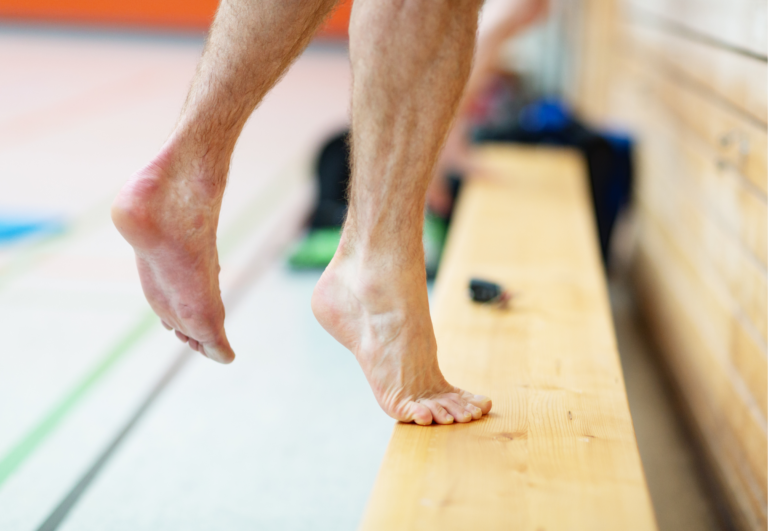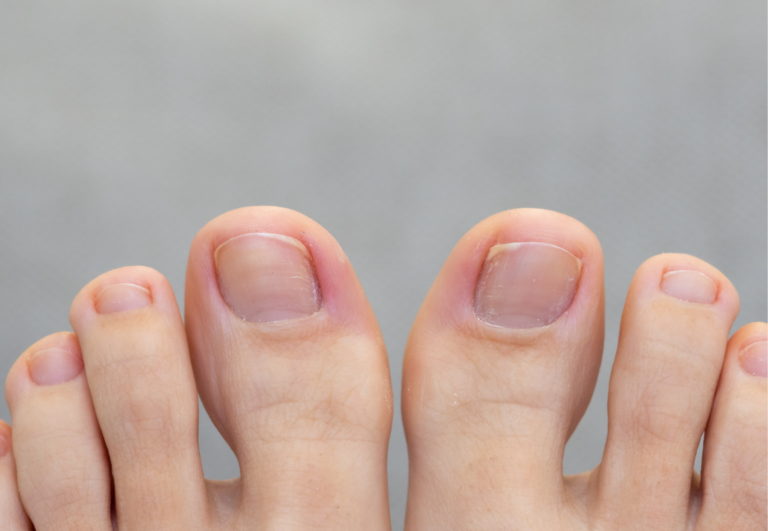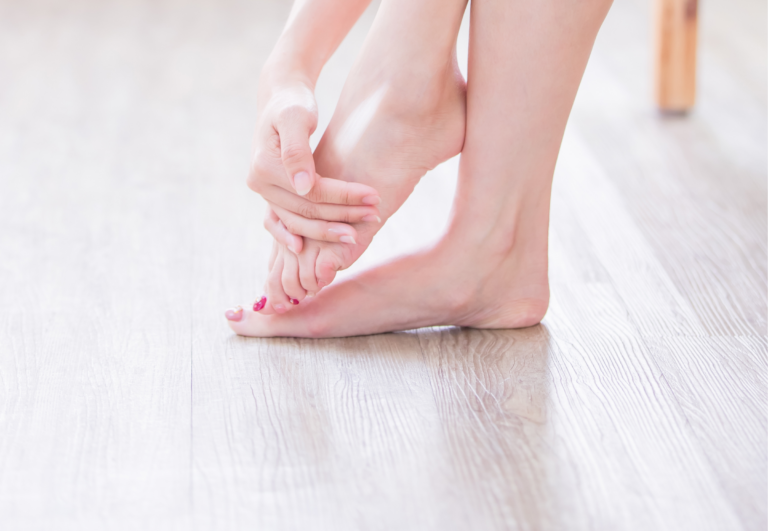How Toe Spacers Can Help with Recovery from Foot Strain: Unveiling the Potential Benefits
I’ve observed many individuals turning to toe spacers as a remedy for foot strain, and for good reason. These tools are designed to realign the toes to their natural position, potentially reducing pain and discomfort associated with conditions like bunions, plantar fasciitis, and hammertoes. When the toes are separated and properly aligned, there is less stress on the muscles and ligaments of the feet, which can expedite recovery from various foot ailments.
Wearing toe spacers can also help improve balance and foot function. They encourage the toes to spread out evenly, which can enhance stability and walking gait. This is particularly valuable for athletes or anyone with a foot strain injury seeking to return to activity without the risk of recurring pain or further damage.
Additionally, the use of toe spacers is a proactive approach to maintaining foot health. While they can’t replace professional medical treatment, integrating them into a broader foot care routine can help mitigate the effects of tight, constrictive footwear and promote overall foot comfort. It’s important for users to choose the correct size and wear them as advised to maximize benefits.
How Toe Spacers Can Help with Recovery from Foot Strain
Foot strain is a common condition that arises from overstressed foot muscles, ligaments, and tendons. Toe spacers are a non-invasive remedy that can aid in the recovery and alignment of the foot structure.
Toe spacers can assist in the recovery from foot strain by providing several therapeutic benefits:
- Reduced Pressure on Joints: By realigning the toes to their natural position, toe spacers can reduce pressure on the toe joints. This can alleviate pain and allow for the joints to recover from strain more effectively.
- Improved Circulation: Spreading the toes can enhance blood circulation in the feet. Better circulation can facilitate healing by delivering more oxygen and nutrients to stressed tissues while aiding in the removal of waste products.
- Enhanced Muscle Recovery: Toe spacers encourage the activation and strengthening of the small intrinsic muscles in the feet. This can help in the recovery process by promoting muscle balance and reducing the likelihood of future strains.
- Stress Relief and Relaxation: The use of toe spacers can provide a sense of relief and relaxation for the feet, especially after being confined in tight shoes. This can help reduce overall foot stress and contribute to a better recovery environment.
- Prevention of Overcompensation: By improving toe alignment and foot structure, toe spacers can prevent other parts of the foot or body from overcompensating for the strain. This can reduce the risk of secondary injuries and promote a more balanced recovery.
- Increased Flexibility and Mobility: Toe spacers can increase the flexibility and mobility of the toe joints, which may be beneficial following a strain as the toes may be less stiff and more capable of a full range of motion.
It’s important to note that while toe spacers can be helpful in recovery, they should be used as part of a comprehensive approach that may include rest, ice, compression, elevation (RICE), physical therapy, and exercises specifically designed for foot rehabilitation.
Always consult with a healthcare professional or a physical therapist for personalized advice and to ensure that toe spacers are appropriate for your specific condition.

Understanding Foot Strain
Foot strain usually occurs when the muscles, tendons, and ligaments in our feet are excessively stretched or torn due to overuse, incorrect foot alignment, or wearing ill-fitting shoes. Toes play a crucial role in maintaining balance and support. When they are compressed, the natural alignment of the foot is disrupted, leading to strain.
- Muscles: Work in coordination with tendons to move the toes.
- Ligaments: Stabilize the joints, allowing for proper foot mechanics.
- Tendons: Connect muscles to bones, facilitating toe movement.
- Joints: Intersection points where bones meet and allow for flexibility.
The Function of Toe Spacers
Toe spacers, commonly made from materials like silicone, gel, or foam, are designed to fit snugly between the toes. By doing so, they gently push the toes back into their natural position, promoting better alignment of the foot’s bones.
- Silicone/Gel/Foam: Materials used to create toe spacers for comfort and flexibility.
- Toe Spacers: Aid in the separation and realignment of toes.
- Alleviate Pressure: They relieve pressure on the toe muscles and tendons.
- Improve Alignment: By separating the toes, spacers contribute to the proper alignment of the foot’s joints.
- Muscle Stretching: They stretch the foot muscles and ligaments, aiding in recovery from strain.
- Reduce Friction: Toe spacers can prevent the toes from rubbing against each other, minimizing the risk of blisters and calluses.
By wearing toe spacers, I find that my feet can recover more efficiently from the strains caused by tight shoes and high-impact activities. They are a simple, yet effective tool in maintaining overall foot health and alleviating the discomfort associated with foot strain.
Benefits of Toe Spacers for Foot Recovery
Toe spacers are highly beneficial in the recovery process from foot strain, providing direct relief and promoting long-term foot health. They are specifically designed tools made primarily of silicone to address issues such as pain, pressure, and misalignments.
Alleviating Pain and Discomfort
Toe spacers can significantly reduce foot pain by distributing pressure evenly across the foot. When I wear them, I notice a decrease in painful symptoms resulting from calluses, blisters, or plantar fasciitis. This pain relief is due to the gentle separation of toes, alleviating friction and allowing for better mobility.
Correcting Toe Misalignments
Consistent use of toe spacers may aid in the realignment of the toes. For those with bunions or hammertoes, spacers can help maintain toe alignment, which may slow down the progression of such deformities. I find that the silicone material of these spacers ensures comfort while they gently encourage my toes into a more natural position.
Improving Foot Strength and Stability
By spreading the toes, spacers encourage stronger and more resilient foot muscles. Strengthened foot muscles contribute to overall foot stability and balance. Many users, including myself, experience improved foot function and a reduction in the risk of future injuries thanks to the reinforcement that toe spacers provide to the foot’s natural structure.
Conditions and Symptoms Addressed by Toe Spacers
Toe spacers are a practical tool geared toward alleviating several foot concerns and aiding in recovery from foot strain. They are shaped to fit between toes, encouraging proper alignment and creating space where compression might occur.
Common Foot Conditions
Bunions: Often presenting as a painful bump at the big toe’s base, bunions are exacerbated by pressure and toe crowding. By using toe spacers, I’ve noticed they help to maintain correct toe alignment, potentially preventing bunion progression.
Hammertoes: A condition where toes curl downward, like claws, hammertoes can benefit from the toe realignment that spacers provide, reducing strain and toe deformities.
- Corns and Calluses: These areas of thickened skin resulting from friction can be minimized by repositioning toes into a more natural spread, which is precisely what toe spacers are designed to do.
- Arthritis and Inflammation: By promoting a better toe spread and alignment, toe spacers can relieve the pressure that contributes to joint pain and inflammation, often linked with foot arthritis.
Plantar Fasciitis: For those suffering from the heel pain associated with plantar fasciitis, proper foot alignment facilitated by toe spacers can support the foot’s natural arch, possibly aiding in recovery.
Flat Feet: Individuals with flat feet might find that toe spacers can aid in correcting foot posture, thereby providing relief and supporting recovery.
Preventative Use for Athletes
Performance: As an active person myself, I’ve noticed that using toe spacers aids in distributing my weight more evenly across my feet, potentially enhancing my athletic performance.
Recovery: After intense activities, it’s not unusual for athletes to experience foot strain. Toe spacers can assist in the recovery process by remedying misalignment and promoting proper joint positioning, crucial for healing.
In using toe spacers, it’s essential to select the appropriate size and material for comfort and effectiveness, and to consult a podiatry professional to ensure they’re suitable for your specific needs.
Incorporating Toe Spacers into Recovery Routines

In my experience, toe spacers are valuable tools for aiding recovery from foot strain. They can be used to stretch and strengthen foot muscles, contributing to overall foot health.
Recommended Exercises
- Stretching: Place the toe spacers between each toe and sit back with your feet flat on the ground, knees bent. Let the natural weight of your body gently stretch your toe muscles.
- Toe Splays: With the spacers on, try to spread your toes apart. Hold the position for a few seconds before releasing. Repeat this several times.
- Squats: Perform squats while wearing toe spacers to ensure that your toes stay aligned and that you’re engaging the right foot muscles.
Best Practices for Usage and Hygiene
- Washing: Clean your toe spacers with soap and water after each use to maintain hygiene.
- Durability Check: Inspect your toe spacers regularly for signs of wear and tear to ensure they continue to offer the proper support.
- Consistency: Incorporate the use of toe spacers into your daily routine for best results, but don’t overdo it. Start with short periods and gradually increase as your feet adjust.
- Foot Care: Never ignore pain or discomfort while using toe spacers. They should aid recovery, not contribute to pain.
By following recommended exercises and adhering to proper usage and hygiene habits, toe spacers can effectively complement your recovery regime.
Choosing the Right Toe Spacers for Your Needs
When it comes to recovery from foot strain, selecting the appropriate toe spacers is crucial. Material, fit, and guidance from healthcare professionals play a pivotal role in promoting proper alignment and foot health.
Different Materials and Fits
Toe spacers come in various materials such as silicone, gel, and sometimes foam. Here’s a quick rundown:
- Silicone: Durable and firm, providing solid support.
- Gel: Soft and flexible, often providing a more comfortable fit.
- Foam: Lightweight and may offer a softer experience, though less durable.
Ensuring a proper fit is essential. Your toe spacers should not cause discomfort or pain; they’re designed to gently realign your toes to a natural position. A snug fit helps maintain the position of the spacers, but they shouldn’t be so tight that they restrict circulation.
Guidance from Healthcare Professionals
Consulting a healthcare professional such as a podiatrist can provide invaluable advice for your unique situation. They may assist with:
- Assessing Foot Needs: Your foot’s shape and the severity of the strain will determine the best spacer.
- Promoting Proper Alignment: Guidance on the correct use of toe spacers to benefit your recovery.
Always ask a specialist before starting to use toe spacers, especially if you wear other proper footwear, like orthotics, as they may affect the fit and function of the spacers.





